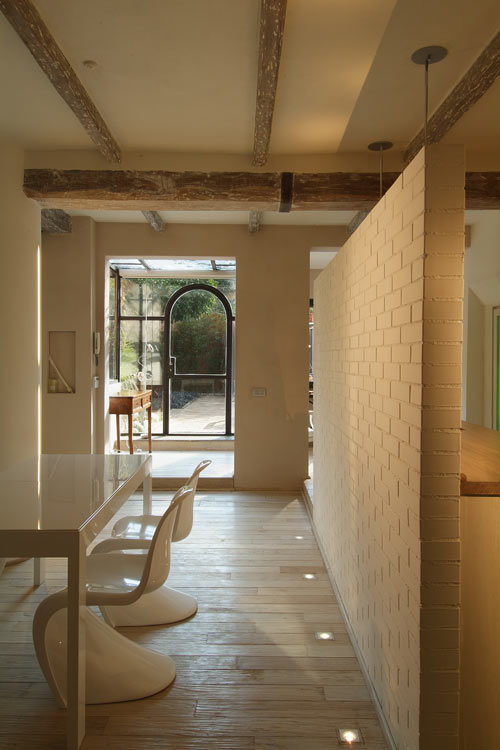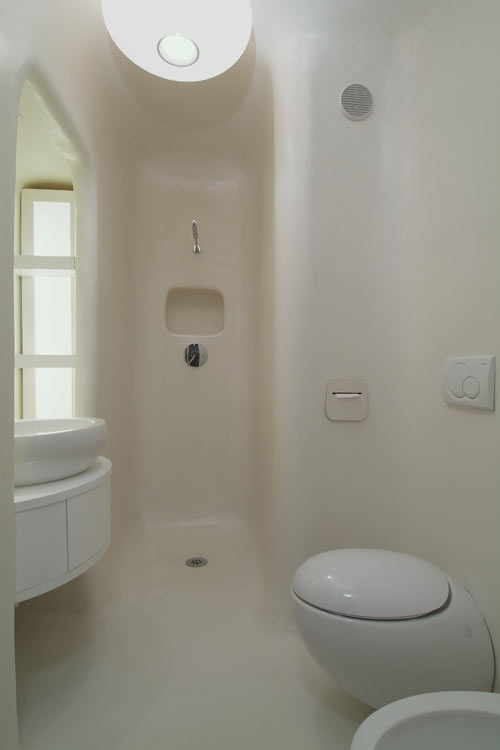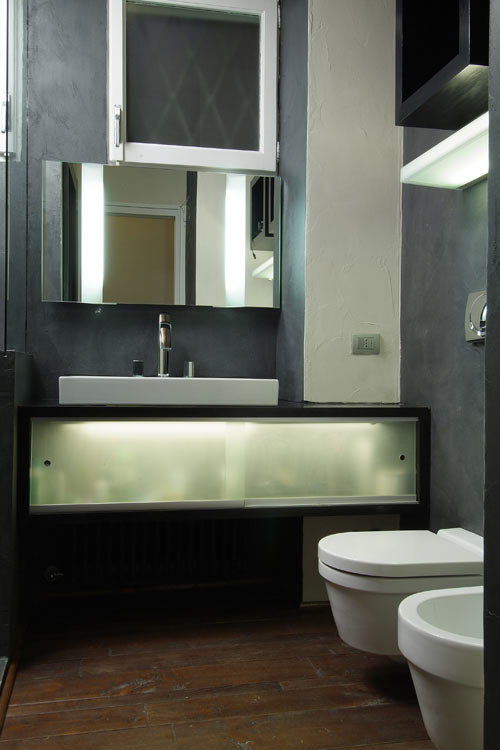
The challenge presented to the architect was to create a modern space inside of an ancient structure, creating balance and preserving the integrity of the original building.
Gianicolo House is a private residence located in the Trastevere area in the heart of Rome's historical center. This project included a re-imagining of the interior space as well as the design of furniture and lighting by Carola Vannini Architecture.
Words below are from the architect:
The day area, conceived as an open space, overlooks a large garden and creates an 'inside out' perspective. The kitchen is partially enclosed behind a brick wall that doesn't reach the ceiling, thus preserving the perception of the continuing space. From the entrance, emphasis is given to the modern fireplace. The night area is divided into two bedrooms, three bathrooms and two walk-in closets. The daring and functional design shapes in the bathrooms are made possible with the use of resins and new materials.




Kitchen
The kitchen has been designed to be partially separated from the livingroom. Most of the kitchen is visible from the open-space livingroom area, so a minimalist design was chosen to agree with the rest of the house's style. The long natural oak worktop, which folds into the wood basin, emphasizes the kitchen's length and moves the eye toward the garden. The storage units underneath the worktop have a clean design: the handles are recessed in the thickness of the doors and the appliances are hidden by the white dyed-oak doors. The special paint that has been used doesn't cover but emphasizes the wood's grain. On the other side, the white oak kitchen furniture has been designed to hide its real functions: the two matte-glass doors conceal two large cabinets which are back-lit by a green neon that agrees with the colors of the living room sofa while lighting the entire space.


White bathroom
The small and irregular surfaces of the guest bathroom have been transformed. All angles (even those between floor and walls) have been smoothed, with the intention of denying any visual reference point. The pure white color, the lighting design, and the shining resin veneering all contribute to creating a surreal feeling. All details have been designed by the architect: mirrors, white glossy enamel wooden furniture, and decorative elements such as the transparent plexiglass tubes inserted into the wall. Architecture and design are here intentionally melded in order to create a space where the gaze flows without interruption.

Red bathroom
The red bathroom has been conceived to create a warm and relaxing space by underlining the existing ancient structural features, and mixing them with a minimalist geometric design. The built-in bathtub is emphasized by the use of strong and contrasting colors such as red, green, and silver. Underneath it, small storage cubes have been created. The dominant red is interrupted by the glossy white enamel wooden furniture designed by the architect. Other small white storage cubes underline the geometry of the room, sliding in and out of the wall.

Black bathroom
The black bathroom creates a refined balance between dark colors and warm materials, such as the chestnut wood floor. The spatial geometry has been underlined by alternating resin white and black tones. The lighting design illuminates unusual details such as the matte-glass luminous shelf and the inside of the black oak cabinet underneath the basin. The square black oak shelves and furniture, designed by the architect, contribute to the cohesive composition of the entire space.
No comments:
Post a Comment